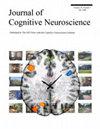Differential Neural Mechanisms Underlying Inhibition of Color and Dynamic Motion Distractors
IF 3.1
3区 医学
Q2 NEUROSCIENCES
引用次数: 0
Abstract
Navigating visually complex environments requires focusing on relevant information while filtering out (salient) distractions. The signal suppression hypothesis posits that salient stimuli generate an automatic saliency signal that captures attention unless overridden by learned suppression mechanisms. In support of this, ERP studies have demonstrated that salient stimuli that do not capture attention elicit a distractor positivity (PD), a putative neural index of suppression. Yet, to date, this hypothesis has been primarily tested with color singletons, leaving it unclear if the PD reflects general suppression or is specific to color singletons. This study compared lateralized ERPs elicited by color singleton and dynamic motion distractors using a variant of the additional singleton paradigm that has been shown to result in proactive suppression of colored distractors. Behavioral results showed a singleton presence benefit for both distractor types, indicating distractor suppression. However, ERP data revealed clear differences in the underlying neural mechanisms: Color singletons elicited a PD component indicative of proactive suppression, whereas motion singletons elicited a later positivity preceded by an N2pc, suggesting reactive suppression. Our findings suggest that motion singletons, unlike color singletons, are suppressed reactively after initial capture. This study highlights the importance of considering distractor feature dimensions in understanding attentional suppression mechanisms and underscores the need for caution in establishing proactive suppression based on a single metric. Further research is needed to clarify the conditions under which the early PD reliably indicates proactive suppression and to explore the neural processes underlying the suppression of various salient distractors.颜色和动态运动干扰物抑制的不同神经机制。
在视觉复杂的环境中导航需要专注于相关信息,同时过滤掉(突出的)干扰。信号抑制假说认为,显著性刺激会产生一个自动的显著性信号,除非被习得的抑制机制所覆盖。为了支持这一点,ERP研究已经证明,不引起注意的显著刺激会引起分心正性(PD),这是一种假定的抑制神经指数。然而,到目前为止,这一假设主要是在有色单子身上进行的测试,尚不清楚PD是反映了普遍的抑制还是只针对有色单子。本研究比较了由彩色单例和动态运动干扰物引发的侧化erp,使用了一种变体的附加单例范式,该范式已被证明会导致对彩色干扰物的主动抑制。行为学结果显示,两种类型的分心物都有单例存在的好处,表明分心物受到抑制。然而,ERP数据揭示了潜在神经机制的明显差异:颜色单基因引发PD成分,表明主动抑制,而运动单基因引发N2pc之前的后期正性,表明反应性抑制。我们的研究结果表明,与颜色单子不同,运动单子在初始捕获后被反应性地抑制。本研究强调了在理解注意抑制机制时考虑干扰物特征维度的重要性,并强调了在基于单一指标建立主动抑制时需要谨慎。需要进一步的研究来阐明早期PD可靠地表明主动抑制的条件,并探索抑制各种显著干扰物的神经过程。
本文章由计算机程序翻译,如有差异,请以英文原文为准。
求助全文
约1分钟内获得全文
求助全文
来源期刊
CiteScore
5.30
自引率
3.10%
发文量
151
审稿时长
3-8 weeks
期刊介绍:
Journal of Cognitive Neuroscience investigates brain–behavior interaction and promotes lively interchange among the mind sciences.

 求助内容:
求助内容: 应助结果提醒方式:
应助结果提醒方式:


